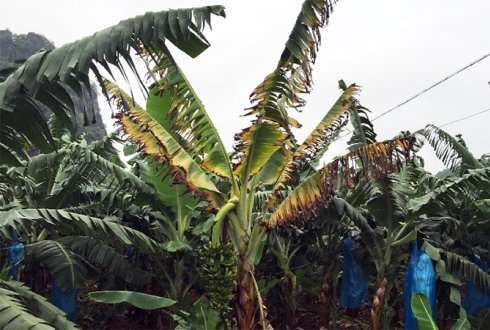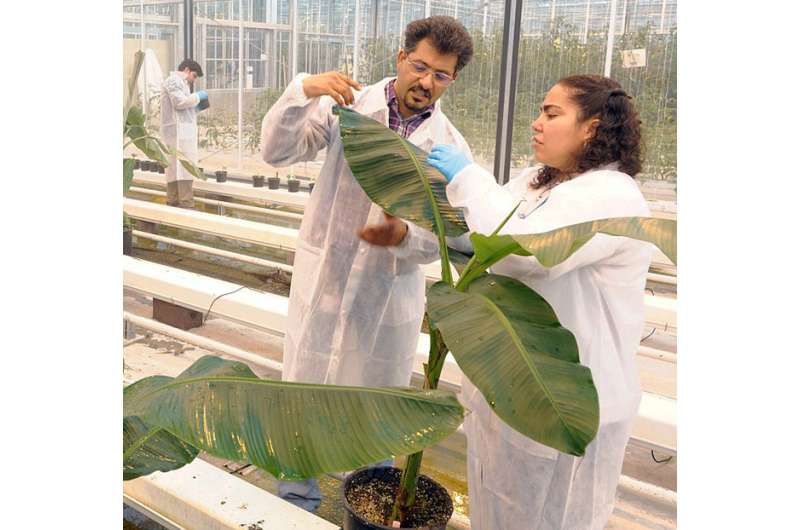Spread of Panama disease in banana caused by one single clone of the Fusarium fungus

Scientists at Wageningen University have demonstrated that the same clone of the Fusarium fungus is infecting Cavendish bananas in several countries dotted across the globe. This shows that this Fusarium clone, also known as Tropical Race 4, is continuing to spread despite the quarantine measures, with disastrous results for banana growers. The results from the research appeared today in the scientific journal PLOS Pathogens.
Panama disease is caused by the Fusarium oxysporum f.sp. cubense fungus. One of the Fusarium strains is called 'Tropical Race 4' (TR4) and infects many local banana varieties as well as the widely exported Cavendish banana, which is very susceptible to this strain. The soil-borne fungus enters the banana plant through the root and eventually kills the entire plant. Banana-growing plots infested with the fungus remain contaminated for many years. It is then no longer possible to cultivate bananas on such a plot of land, as new banana plants become infected too. Large areas of banana plantations in countries such as Jordan, Mozambique, China, the Philippines, Pakistan and Australia are no longer suitable for banana farming, as they have become infested with the Panama disease fungus. There are currently no means of combating the disease; only quarantine measures can prevent banana plantations from becoming infested.
DNA investigation
The researchers at Wageningen UR analysed the DNA of many fungus specimens from eight countries where the fungus has recently been identified, including Jordan, Lebanon and Pakistan, in order to trace how Panama disease has come to spread to different locations across the globe. The research highlighted that the strains of the fungus, which were collected are genetically identical. The strains are clones. Gert Kema, banana expert at Wageningen UR, says: 'This research demonstrates that the quarantine measures and information provided around the globe apparently have not had the desired effect.'
A tale of two clones
Not only the TR4 fungus strain is a clone: all Cavendish bananas also share the same genes. Kema explains: 'The Cavendish banana is very susceptible to TR4. Therefore, the fungus can spread easily due to the worldwide monoculture of Cavendish bananas. That's why we have to intensify awareness campaigns to reach small and large-scale growers in order to help them with developing and implementing quarantine measures preventing the fungus from continued spreading.'
Worldwide approach needed to stop further spreading
To stop further spreading, Kema's team is working with a large number of partners in different locations across the globe to develop short-term solutions for Panama disease management. Kema continues: 'We are gaining more and more insight into the scope of the issue. The ability to quickly identify infected banana plants and infested soils is extremely important in this respect. However, eventually we have to come up with long-term solutions, particularly host resistance, which can only be developed in strong multidisciplinary alliances with various partners and industry.'

More information: Nadia Ordonez et al. Worse Comes to Worst: Bananas and Panama Disease—When Plant and Pathogen Clones Meet, PLOS Pathogens (2015). DOI: 10.1371/journal.ppat.1005197
Journal information: PLoS Pathogens
Provided by Wageningen University


















